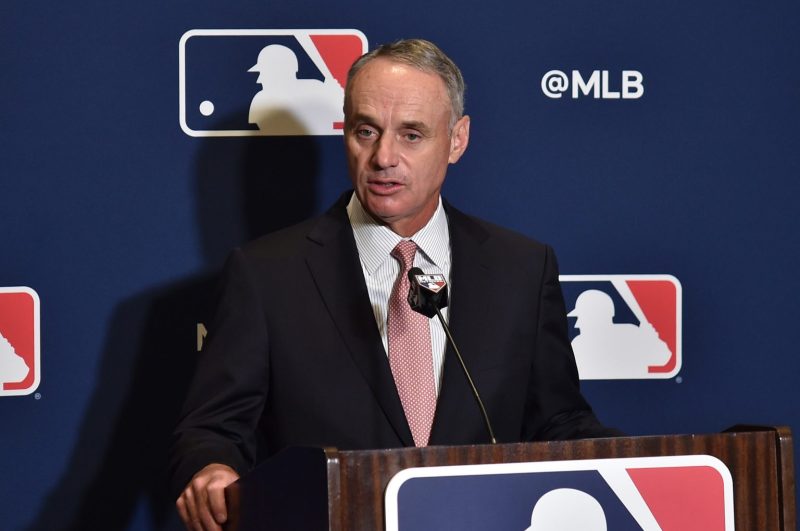On Tuesday, Major League Baseball implemented a 60-game schedule for the 2020 season, set to start on July 23 for four teams and July 24 for the remaining 26 teams. This shortened season was announced following months of debate between the Players Association (MLBPA) and the team owners regarding the fate of the season in the midst of the COVID-19 pandemic.
Under this current agreement, players will receive a completely prorated version of their salaries — what they wanted — and will report to camps for a spring training on July 1. This means that players will receive the total amount of their salaries proportional to the number of games they play compared to the normal 162, coming out to about 37% of their regular salaries. Locations of games and COVID-19 guidelines have yet to be completely released.
While it’s great to see that baseball will be played in 2020, many sports fans have criticized team owners based on these negotiations. Throughout the proposal period, owners refused to concede more money to the players. When they made proposals (and counter-proposals) of their own to the MLBPA, they refused to change the amount of money they would give up, all they did was change how they presented it. For example, they offered 82 games at a sliding scale salary, then 50 games at a fully prorated salary, then 76 games at a 75% prorated salary. Each of these offers came out to roughly 33% of players’ original salaries. Owners time and time again were unwilling to negotiate with players, making any decision an impossible scenario.
Adding onto this disconnect witnessed between players and owners was that the value for fans of the game seemed to be a non-factor. Had the two sides reached an earlier compromise, the MLB could have potentially been the only major American sport playing for almost two months, assuming the sport figured out how to safely proceed. “The shame of it is, if the MLB had come back, they could’ve really owned June and early July, at least until the NBA came back,” sports analyst Bill Simmons said on The Ringer Podcast.
This would’ve been an unparalleled opportunity since June is almost always dominated by the NBA playoffs. The exposure that would have been generated from being the only sport around may have been able to garner some younger fans, who are part of generations that have grown up watching football and basketball rather than “America’s National Pastime.” And that’s a trend the sport has seen over the last few years: becoming a relic of the past. Since 2005, the World Series has topped 20 million viewers just one year. To put that into context, from 1973-1992, it dipped below 25 million viewers just once, generally staying above the 30 million mark. This opportunity to dominate the sports world for a month or two could have sparked new interest, and if the owners were willing to accept some revenue losses and start the season, they may have garnered new and younger viewers and seen the return of baseball in exchange.
Additionally, not only has this lack of a negotiation affected this year, repercussions will last throughout the league for years to come. One stark example is the draft. Lost revenue for teams forced the MLB to shorten the draft from 40 rounds to just five rounds. This contributed to no Stanford Cardinal players being selected for the first time in the last 49 years.
The owners also said that they wouldn’t pay many minor leaguers throughout the pandemic, causing many to be cut completely. Some players on the other hand offered to pledge some of their money to minor leaguers, like David Price of the Dodgers, who gave $1000 to everyone in the Dodgers’ minor league system. And when the players’ association made a proposal the owners didn’t like, owners even said that they weren’t planning on countering, disappointing players and fans alike.
A recently released ESPN 30 for 30 showcased the home run race between sluggers Mark McGwire and Sammy Sosa in the summer of ‘98. It displayed how much baseball once meant to a generation of fans. The entire nation was interested in what was going on, so much so that channels would interrupt what was being aired to show Sosa and McGwire’s at-bats. People were so excited about baseball, they even recorded Cardinals and Cubs games so they wouldn’t miss a single homer. Nobody under 60 years old tapes MLB games nowadays. That may have been the last time that baseball really captured national attention as much as basketball and football do now. This was their opportunity and the owners and players dropped the ball. Now the return of Major League Baseball may be overshadowed by the NBA’s plan to play in Disney World beginning July 31.
The MLB had their chance to regain the top spot, even if only for a month, and while commissioner Rob Manfred eventually instituted a season, ensuring there will be baseball this summer, this year can really only be seen as one thing: a missed opportunity.
Contact Sam Levine at samplevine ‘at’ gmail.com.
